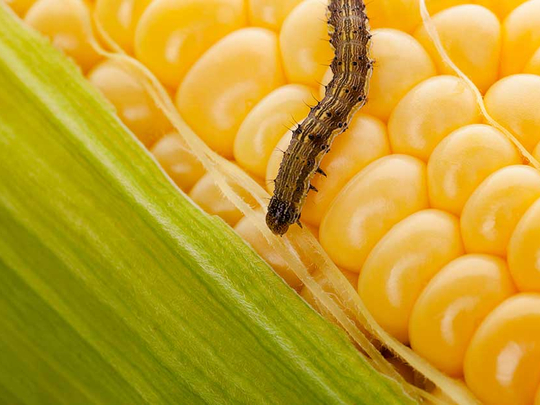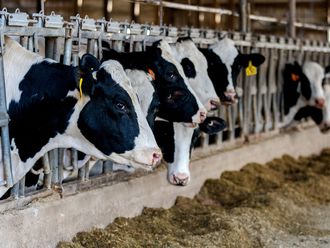
Tampa: Ever since humans learnt to wrest food from soil, creatures like the corn earworm, the grain weevil and the bean fly have dined on our agricultural bounty. Worldwide, insect pests consume up to 20 per cent of the plants that humans grow for food, and that amount will increase as global warming makes bugs hungrier, according to a study published on Thursday in the journal Science.
That could encourage farmers to use more pesticides, which could cause further environmental harm, scientists said.
For every degree Celsius (2 degrees Fahrenheit) that temperatures rise above the global historical average, the amount of wheat, corn, and rice lost to insects will increase by 10 to 25 per cent, the study says. Temperate agricultural regions, like those in the United States and Western Europe, would be particularly hard hit.
The international Paris Agreement is designed to keep warming below 2 degrees Celsius, but the world’s countries are far off track from meeting that goal.
By eating such a large amount of crops in the field, “insects have consumed something like one out of every eight loaves of bread before it even gets made,” said Curtis Deutsch, a professor of chemical oceanography at the University of Washington and an author of the study. “If we warmed 4 degrees, which is what climate models typically predict for the end of this century, then that amounts to insects eating two of our eight loaves of bread instead of one.”
“When it gets warmer, pest metabolism increases,” said Scott Merrill, a researcher at the University of Vermont and co-author of the study in the journal Science.
“And when pest metabolism increases, insect pests eat more food, which is not good for crops.”
Prior studies have already warned of climate change’s harmful effects on food staples, whether by making water scarce for irrigation or sapping nutritious content from cereal grains.
- Scott Merrill, a researcher at the University of Vermont
The latest study adds to that body of research by focusing on the boosted appetites of pests like aphids and borers.
To find out just how bad it could get, researchers ran simulations to track temperature-driven changes in metabolism and growth rates for 38 insect species from different latitudes.
Higher temperatures speed many insects’ metabolisms, making them eat more. Their life cycles also get faster, causing them to reproduce more quickly. Both effects would diminish crop yields even as the human population continues to increase, putting additional strains on the global food supply, the study says.
To arrive at their estimates, Deutsch and his colleagues used statistical models to simulate the effects of global warming on insect feeding and reproduction. They focused on wheat, corn and rice crops because they account for 42 per cent of the calories directly consumed by humans.
Other factors could help mitigate crop losses. Beneficial insects could also thrive in a warmer climate, said Michael Hoffmann, a professor of entomology and executive director of the Cornell Institute for Climate Smart Solutions, who was not involved in the study. Those insects could end up “offering some suppression of the pests, so that the damage may not be as great as they are suggesting,” Hoffman said.
Still, higher temperatures can spell bad news for thirsty crops, regardless of insect activity. A study last year in the journal Nature Communications found that the pressures from increased summer temperatures could lead to a significant decline in agricultural yields. This summer’s European heatwave, which is in keeping with patterns of climate change, reduced Germany’s grain production by roughly 20 per cent.
That study found that improved irrigation could offset at least some of the losses. But it is less clear if insecticides could help stave off multiplying pests.
“The one out of eight loaves of bread that we currently lose already reflects what we can do to manage crop losses to insects,” Deutsch said. Pesticides could help where they’re not already in use, but in other regions, “there’s a real question as to whether or not they’re already at their maximum effectiveness,” he said.
In addition, pesticides can unintentionally harm other organisms, and some have been linked to human health problems. Their manufacture, transport and use also contribute to global warming.
Deutsch said the real solution was to drastically reduce the level of greenhouse gases that humans emit. “If you want to solve a big problem with a million tendrils, you have to go to the root of it,” he said. “Otherwise, you’re manufacturing a million Band-Aids. I don’t think that’s feasible. It’s also much harder.”
Future in trouble
France stands to lose about 9.4 per cent of its maize to pests in a world that is 2C warmer, compared to about 6.6 per cent of yield losses today due to pests.
In Europe, currently the most productive wheat producing region in the world, annual pest-induced yield losses could reach 16 million tonnes.
Eleven European countries are predicted to see 75 per cent or higher losses in wheat from pests, compared to current pest damage.
In the United States, the world’s largest maize producer, insect-induced maize losses could rise 40 per cent under current climate warming trajectories, meaning 20 fewer tonnes of maize per year.
China, home to one-third of the world’s rice production, could see losses of 27 million tonnes annually.
The study did not account for any anticipated increase in pesticide use, or other methods of stemming the expected crop loss.
Though tiny, these bugs are a major threat in North America, where they are considered an invasive species after first being detected in the 1980s.












